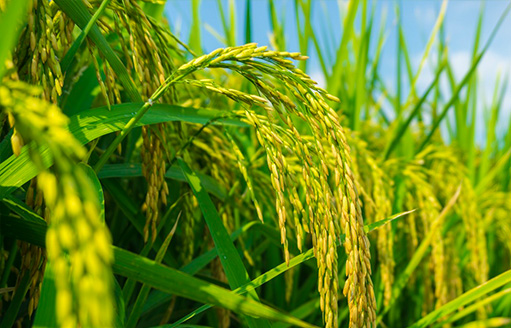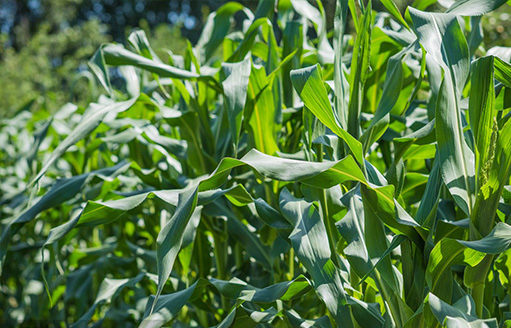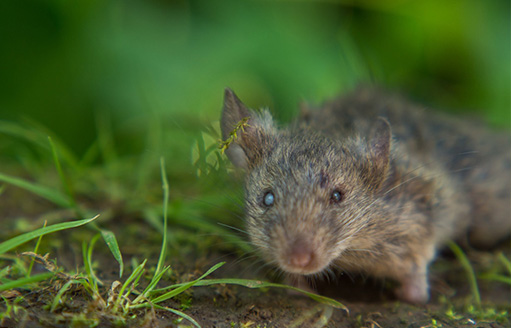To meet the demand for soybean water and fertilizer in a timely and effective manner through the integration of water and fertilizer technology is a key measure for the current soybean yield increase, which is of great significance for supporting a new round of 100 billion tons of capacity improvement projects and consolidating the foundation of national food security. In order to serve the soybean yield improvement project and promote the balanced increase of soybean yield in a large area, this technical scheme is formulated.
1. the main suitable area
Suitable for soybean production areas with water sources, such as spring soybean in northeast and northwest China, summer soybean planting areas in Huang-Huai-hai and Yangtze River basins. It is advisable to use drip irrigation and other methods for precise irrigation and fertilization, to ensure that the seedlings are full and full after sowing, and to ensure the accurate supply of water and fertilizer in the whole process. At the same time, it integrates scientific seed selection, reasonable dense planting, rhizobia inoculation, disease and pest control and other supporting measures. Compared with the local routine, the integrated technology of water and fertilizer is used to strengthen the precise application of water and fertilizer, and strive to achieve an increase of more than 20 kg per mu per unit yield. On the basis of maintaining the intensity of maize fertilization, the application of soybean fertilizer can be appropriately reduced, the coating of rhizobium agent or seed dressing can be advocated, the biological nitrogen fixation can be strengthened, the amount of nitrogen fertilizer can be reduced, and the application of phosphate and potassium fertilizer can be emphasized.
2. Key technical points
(1) Spring soybean area.Mainly in the northern spring soybean area, such as the West Liaohe River basin, the western Songnen Plain, the Northeast spring soybean area such as the Greater Hinggan Mountains piedplain, and the northwest spring soybean area such as Xinjiang and Hexi Corridor, it is suitable to promote shallow buried drip irrigation, drip irrigation and other technologies to achieve integrated water and fertilizer management in areas with irrigation conditions.
1.Precise land planning and scientific sowing.First, fine-grained land preparation. To master the "flat, broken, even", it is recommended to turn more than 30 cm deep, break the bottom of the plow, timely rake, so that the plow layer is virtual and solid, and the ground is smooth. Second, ridging and laying pipes. The traditional two rows on the ridge are changed to four rows on the ridge, and the planting mode is adopted. The small row spacing is 20-30 cm and the large row spacing is 30-50 cm. The small flow drip irrigation belt should be laid in the middle of the narrow row, and the large flow can be laid in the middle of the wide row. The third is seed treatment. Suitable varieties should be selected to promote rhizobia inoculation technology, and suitable seed coating agents should be selected according to the occurrence of major local diseases and pests. The materials selected for coating agents should be harmless to rhizobia. Fourth, scientific sowing. When the soil temperature of 5-10 cm in the surface layer is stable at 10-12℃, timely sowing, suitable for water density, water immediately after sowing when the soil moisture is insufficient, improve the emergence rate and seedling quality.
2. Coordinated precision regulation of water and fertilizer.First, the integrated system of water and fertilizer. It is mainly composed of water source, head hub, water distribution network and drip irrigation pipe (belt). The specifications and models of drip irrigation equipment are selected according to the actual production, and the water output of drip irrigation irrigators is generally 1.0-2.5 Between liters per hour. The first hub includes facilities for pressurization, filtration, irrigation and fertilization. The second is irrigation and fertilization strategy. The whole growth period is generally irrigated 3-6 times, each irrigation water 10-30 square/mu. After seeding, seedling water can be drip-irrigated according to the moisture content, and irrigated in the branching stage, the initial flowering stage, the full flowering stage, the podding stage and the drumming stage combined with rainfall. During drip irrigation, the surface wet soil edge can exceed 5-10 cm of the seeding line, and excessive irrigation is not allowed. In the high-yield plots with integrated water and fertilizer, nitrogen fertilizer (N) 3.5-4.5 kg/mu, phosphorus fertilizer (P2O5) 4.5-5.5 kg/mu, potassium fertilizer (K2O) 3-4 kg/mu, 30% nitrogen and potassium and 70% phosphorus fertilizer are generally applied as base fertilizer. 70% N K and 30% P fertilizer were applied with water respectively from the initial flowering to the pod-setting stage. Can be combined with topdressing, appropriate supplemental application of trace elements such as borax fertilizer and molybdenum fertilizer water soluble fertilizer.
3. Other supporting measures.One is the "sealing combination" of weed control. The combination of pre-bud closure after sowing and directional spraying of stems and leaves after seedling was used to control weeds. The second is cultivation and seedling cultivation. The quality of seedling condition can be effectively improved by three tillage operations from seedling seedling to ridge sealing. Third, "one spray promotes more". According to the growing trend of soybean, liquid fertilizer such as potassium dihydrogen phosphate, ammonium molybdate, insecticides and fungicides are sprayed on the leaf surface to achieve multiple effects. In the prosperous long plots, chemical control agents such as tenlobuzole can be sprayed to control the prosperous treatment at the early flowering stage. Fourth, timely harvest. When the leaves are net and the beans are rounded, mechanical harvest is timely to prevent the yield loss caused by frying the pod.
(2) Summer soybean area.It is mainly the Huanghuai River basin and the Yangtze River basin summer soybean area, including Beijing, Tianjin, Henan, Shandong, Jiangsu, Anhui, Hubei, Sichuan basin, Shaanxi Guanzhong area and Shanxi Fenhe Valley, etc., suitable for surface drip irrigation and other methods to achieve integrated water and fertilizer management.
1. The preferred varieties are water dense.First, select varieties. Select soybean varieties with high yield, high quality, lodging resistance, disease resistance and suitable for mechanized harvesting. The seeds should be carefully selected before sowing. It is recommended to use the seed coating agent based on the formulation of chloromethrin and chloronitrile for coating, and inoculate rhizobium by seed dressing, coating, spraying, etc., to promote biological nitrogen fixation. The second is to increase density reasonably. In areas with good water resources, the seedling density of soybean can be increased by 1000 plants per mu on the basis of conventional density, and the density of density-tolerant varieties or late-sowing plots should also be appropriately increased. The third is the emergence of seedlings by dripping water. After wheat harvest, direct no-tillage precision sowing, the sowing depth is generally 3-5 cm, and the soil heavy plot is shallow sowing; After sowing, irrigation through drip irrigation pipe (belt), dry sowing wet out to achieve a full seeding.
2. Water and fertilizer integrated pipeline laying.It is mainly composed of water source, head hub, main pipe, branch pipe and drip irrigation pipe (belt). The specifications and models of drip irrigation equipment are selected according to the actual production, and the water output of drip irrigation irrigators is generally 1.0-2.5 Between liters per hour. The first hub includes facilities for pressurization, filtration, irrigation and fertilization. For soybeans sown in 40 cm equal row spacing mode, 1 drip irrigation belt was used to control 2 rows of soybeans. 20 cm+For soybeans sown in 40 cm wide and narrow rows, drip irrigation belts are arranged in the middle of narrow rows.
3. Irrigation and fertilization strategies.First, water regulation. Depending on the rainfall, water is injected 3-5 times during the whole growth period. Soybean needs less water at the seedling stage and more water at the flowering and pod stage. The water can be released by drip irrigation within 48 hours of sowing, and the surface wet soil edge can exceed 5-10 cm of the sowing line. In order to prevent compaction, drip irrigation can be performed once more at the top of the seed soil. Flowering period, podding period and drumming period according to soil moisture 2-3 times drip irrigation, generally each irrigation water 15-30 square/mu. The second is nutrient regulation. High yield fields generally apply nitrogen fertilizer (N) 3-4 kg/mu, phosphorus fertilizer (P2O5) 5.5-7.5 kg/mu, potassium fertilizer (K2O) 4-5.5 kg/mu. When sowing, 15-20 kg of soybean formula fertilizer can be applied as seed fertilizer per mu. Topdressing with water drops is applied in stages at flowering, pod or bulging stage. It can be sprayed 1-2 times 0.01%-0.05% molybdate solution or 1-2 times 0.1% boron, manganese, copper, zinc and other trace element solution 30-40 kg/mu at the initial flowering or podding stage.
4. Other supporting measures.First, green prevention and control. It is recommended that closed weeding be carried out after seeding. For fields without closed weeding or with unsatisfactory closed weeding effect, post-seedling weeding can be carried out at 2-3 compound leaf stage of soybean. Carry out unified prevention and control of key diseases and insect pests. The second is low loss harvest. Choose a special soybean harvester or a harvester equipped with a special soybean harvest and special cutting table. When harvesting with a rice and wheat harvester, make sure to use a special sieve for soybeans.
3. Key tasks
(1) Conducting technology integration demonstrations.In areas that have been built or newly built high-standard farmland and have high-efficiency water-saving irrigation conditions, we will vigorously promote the application of soybean water-fertilizer integration technology, and transform the advantages of high-efficiency water-saving irrigation equipment into soybean productivity advantages. In combination with green high-yield and high-efficiency projects, soybean yield improvement projects and other projects, the integrated demonstration of soybean water-fertilizer integrated yield and high-yield integration technology was carried out consecutively.
(2) Integrated regional technology model.Resources of science and education units, enterprises and other resources are gathered, and the key points of soybean water-fertilizer integration technology model are referred to, and the comparison is made around different irrigation methods, irrigation amount and fertilizer application amount, optimize technical parameters, supporting varieties, cultivation and other measures, and integrate the localization of soybean water-fertilizer integration technology model, improve pertinency and practicability, and achieve the goal of double improvement of water and fertilizer efficiency and soybean yield per unit area.
(3) Carry out technical guidance training.The integration of water and fertilizer technology is an important technology for soybean yield and high yield, and agricultural technology extension personnel at all levels are mobilized, experts from scientific research institutions, and socialized service organizations are mobilized to go into the field, carry out technical guidance in time, and help farmers solve production problems. Various forms of technical training were held online and offline to explain key technical points and improve the planting skills of agricultural technicians and farmers.







